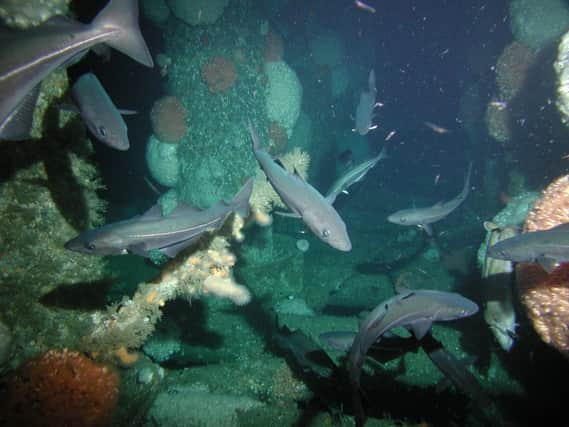Retaining decommissioned North Sea oil rigs could help at-risk corals thrive


Rigs, shipwrecks and other man-made structures off the east coast of Scotland play a vital role in holding coral populations together and increasing their resilience, researchers led by the University of Edinburgh found.
The findings suggest artificial structures from the North Sea oil and gas industry already support a network of densely connected coral ecosystems that spans hundreds of miles and crosses international borders.
Advertisement
Hide AdAdvertisement
Hide AdIt poses an additional environmental concern for the industry to consider as it deals with mounting decommissioning costs posed by many North Sea oil and gas fields which are coming to the end of their productive lives.
The spread of man-made structures in the world’s oceans could negatively impact marine life in many ways – such as helping invasive species spread – however they also have potential to aid conservation efforts, researchers say.
A team led by scientists at the University of Edinburgh used a computer model to reveal how a protected species of coral might use industrial structures to spread.
Coral larvae released near oil platforms would travel between corals that have colonised other structures and reach natural populations located at great distances, they found.
This would enable larvae – belonging to the species Lophelia pertusa – to supplement existing populations and recolonise damaged reefs and protected areas in other countries, improving their chances of survival.
Understanding how the North Sea has responded to man-made structures that have been in place since the 1970s is key to informing decisions about decommissioning, researchers said.
The study, published in the journal Scientific Reports, involved researchers from the National Oceanography Centre, the Norwegian Institute of Marine Research, Heriot-Watt University and BMT Cordah, industry specialists in marine growth surveys.
It was supported by the ANChor project funded by the INSITE programme, and the ATLAS project funded by the European Union’s Horizon 2020 programme.
Advertisement
Hide AdAdvertisement
Hide AdDr Lea-Anne Henry, of the University of Edinburgh’s School of GeoSciences, who led the study, said: “We need to think very carefully about the best strategies to remove these platforms, bearing in mind the key role they may now play in the North Sea ecosystem.”
Professor Murray Roberts, of the University of Edinburgh’s School of GeoSciences, said: “When we first spotted these corals growing on the legs of oil platforms in the late 1990s it was a real surprise, as we expected this to be a very unsuitable environment for them. We now have strong evidence that they’re likely to be dispersing right across the North Sea and into marine protected areas.”
An industry expert has previously suggested that North Sea oil platforms should be made clean and safe then left in position.
Tom Baxter, a senior lecturer in chemical engineering at Aberdeen University, said in January that the move would offer better value for money for taxpayers, while current decommissioning plans - which mostly require infrastructure to be removed - could do more harm to the environment than good.
He said the money saved by leaving the structures could be redirected into green energy, such as solar, tidal or wind power.
Under current rules - which include the Ospar convention governing the North Sea - firms are required under most circumstances to remove installations after use.
